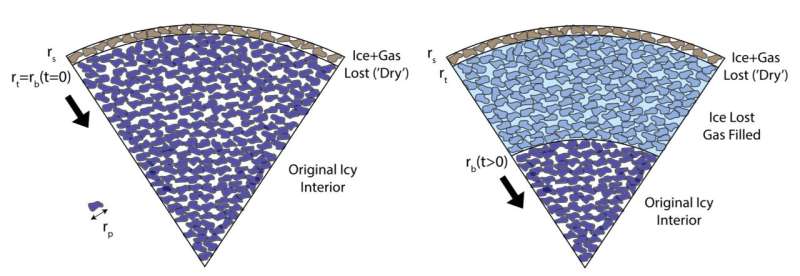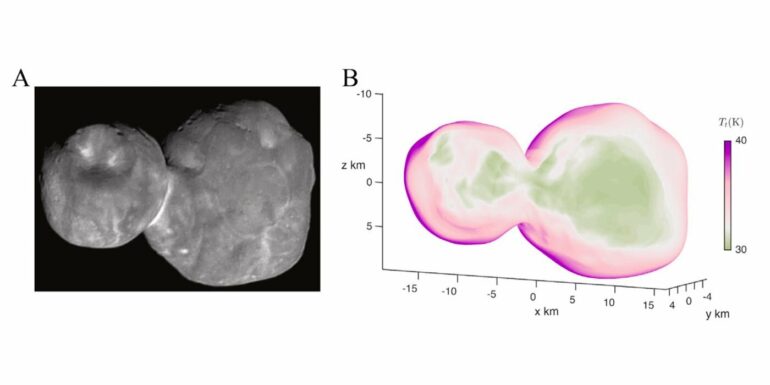A paper recently published in Icarus presents findings about the Kuiper Belt Object 486958 Arrokoth, shedding new light on the preservation of volatile substances like carbon monoxide (CO) in such distant celestial bodies.
Co-authored by Dr. Samuel Birch at Brown University and SETI Institute senior research scientist Dr. Orkan Umurhan, the paper “Retention of CO Ice and Gas Within 486958 Arrokoth” uses Arrokoth as a case study to propose that many Kuiper Belt Objects (KBOs)—remnants from the dawn of our solar system—could still retain their original volatile ices, challenging previous notions about the evolutionary path of these ancient entities.
Previous KBO evolution models have needed help predicting the fate of volatiles in these cold, distant objects. Many relied on cumbersome simulations or flawed assumptions, underestimating how long these substances could last. The new research offers a simpler yet effective approach, likening the process to how gas escapes through porous rock. It suggests that KBOs like Arrokoth can maintain their volatile ices for billions of years, forming a kind of subsurface atmosphere that slows further ice loss.
“I want to emphasize that the key thing is that we corrected a deep error in the physical model people had been assuming for decades for these very cold and old objects,” said Umurhan. “This study could be the initial mover for re-evaluating the comet interior evolution and activity theory.”

Our model features a porous rubble pile, made up of a mix of CO and refractory amorphous H2O ice, with specific pore radii 𝑟𝑝. The top layer, depicted in brown, undergoes thermal processing in just one orbit, resulting in the loss of CO (both ice and gas) in this layer. Below the sublimation front 𝑟𝑏, shown in dark blue, the original CO ice volume remains intact. Over time, as the sublimation front progresses downward (to the right in the model), CO ice embedded in the amorphous H2O ice matrix begins to sublimate. The gas produced, indicated in light blue, then fills the pores and moves upward, away from the sublimation front. © SETI Institute
This study challenges existing predictions and opens up new avenues for understanding the nature of comets and their origins. The presence of such volatile ices in KBOs supports a fascinating narrative of these objects as “ice bombs,” which activate and display cometary behavior upon altering their orbit closer to the sun.
This hypothesis could help explain phenomena like the intense outburst activity of comet 29P/Schwassmann–Wachmann, potentially changing the understanding of comets.
As co-investigators on the upcoming CAESAR mission proposal, the researchers are taking a fresh approach to understanding the evolution and activity of cometary bodies. This study has implications for future explorations and is a reminder of the enduring mysteries of our solar system, waiting to be uncovered.
More information:
Samuel P.D. Birch et al, Retention of CO ice and gas within 486958 Arrokoth, Icarus (2024). DOI: 10.1016/j.icarus.2024.116027
Citation:
Study reveals ancient ice may still exist in distant space objects (2024, March 14)



